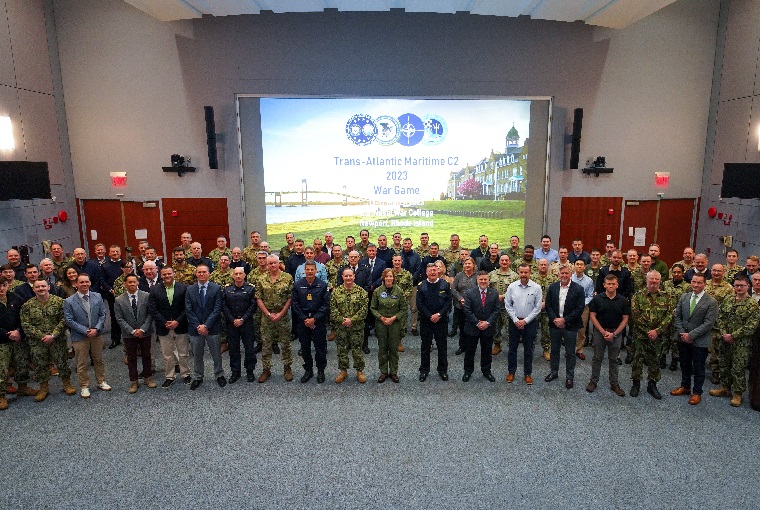U.S. Naval War College Hosts Third 2023 Trans-Atlantic Maritime Command and Control War Game

Newport, R.I. – Over 75 participants from U.S. and NATO commands that spanned 12 countries convened at the U.S. Naval War College (NWC) to participate in a multi-sided, seminar-style war game to enhance unity of effort between U.S. and NATO maritime forces from March 13-17, 2023. The third in a series of Naval Forces Europe (NAVEUR) and Naval Forces Northern Command (NAVNORTH) sponsored war games, the 2023 Trans-Atlantic Maritime Command and Control War Game (TAMC2’23) examined alignment between U.S. and NATO-assigned forces across a variety of missions and tasks in the trans-Atlantic region.
“Unity of effort is vital to our success in the Atlantic region against current and future adversaries and is dependent on our collective forces’ continuity during all phases or during transitions of command and control,” said Vice Adm. Daniel Dwyer, commander, U.S. 2nd Fleet and commander, Joint Force Command Norfolk. “War games like TAMC2 are more important today than ever.”
Set in 2025, game players synchronized and assessed their Supreme Allied Commander Europe (SACEUR's) theater of operations scenario. Players represented both NAVEUR and NAVNORTH commands, as well as Joint Forces Command Brunssum, JFC Naples, JFC Norfolk, Naval Striking and Support Forces NATO, and Allied Maritime Command.
“This war game, spearheaded by the War Gaming Department, illustrates the U.S. Naval War College’s long-standing commitment to collaborating with allies and partners and advancing excellence in education, research, and international maritime cooperation,” said Rear Adm. Shoshana Chatfield, president of the U.S. Naval War College. “I am happy to report that this is the college’s first classified NATO war game with U.S. and international players. This is truly historic, and you all are part of this history.”
A diverse group of intelligence professionals represented the red cell or opposing force, while white cell players provided guidance from the perspective of U.S. European Command, U.S. Northern Command and SACEUR.
“War games are a powerful tool to bring people together to breakdown silos, improve collaboration, and promote trust,” said Walter Berbrick, DLP, the game’s lead analyst. “Equally important, war games, such as TAMC2’23, help our leaders understand and analyze who is responsible for what, why nations transfer authority of their forces, and when and where Allies need to synchronize their capabilities and efforts across boundaries.”
At the final plenary session, players shared their observations, implications, and recommendations from their command’s perspective. Capt. Michael O’Hara, Ph.D., chair of the War Gaming Department, underscored to participants the importance of TAMC2’23 as part of a cycle of research that helps Allied planners and senior leaders better understand the realities and risks of operating together in times of crises and conflict.
“I encourage you to think about what a cycle of research looks like for NATO and how war games like TAMC2’23 fit within a broader suite of war games, exercises, intelligence, studies, and experimentations,” said O’Hara.
Lt. Col. Sam VerPlanck, USMC, game director, noted that this “first of its kind” war game enabled U.S. and international players to make decisions, assess risk, and generate new cross-stovepipe knowledge in a high-intensity, maritime crisis scenario.
Wargaming is a time-honored tradition at the U.S. Naval War College, going back to the institution’s early beginnings in the late 1880s. The college’s war gaming work is credited with shaping the naval strategy that led the U.S. to victory in the Pacific during World War II. Today’s games explore how naval and joint forces deter and win in this era of great power competition.
